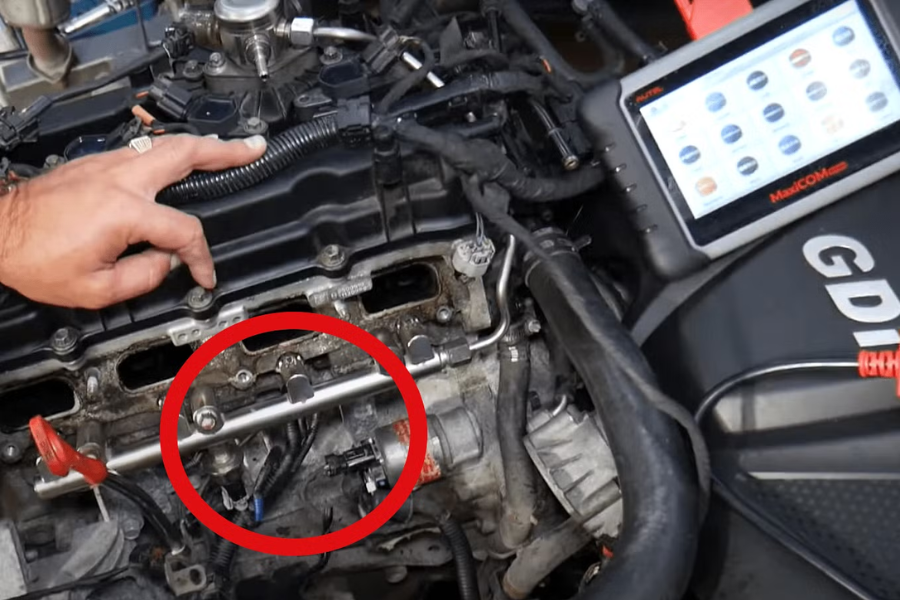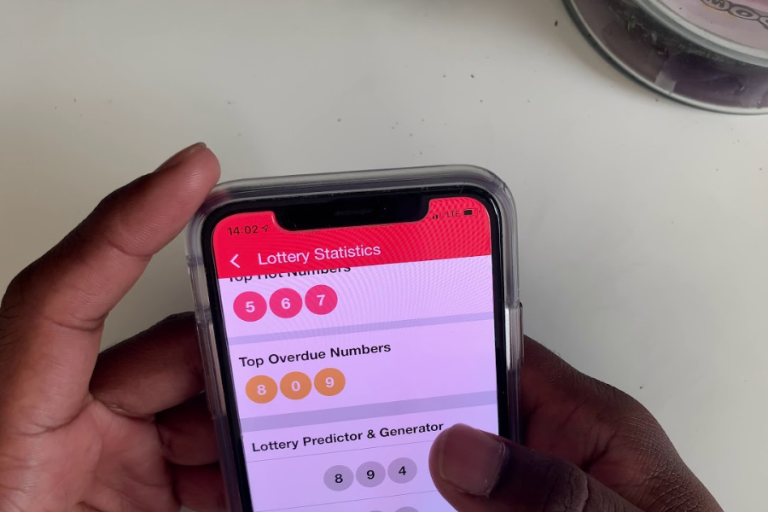Comprehensive Guide To Understanding And Fixing Error Code P1326
In the realm of car maintenance, few things are more unsettling than the appearance of a check engine light on your dashboard. This warning light is often the first sign that something is amiss within the complex systems of your vehicle. One of the most confusing and alarming codes that can trigger this light is the P1326 error code. This guide will walk you through the meaning of this code, the reasons it might appear, and how you can fix it, all while avoiding unnecessary repairs and costs.
Introduction to Error Code P1326
Error Code P1326 is a diagnostic trouble code (DTC) that signals an issue with your vehicle’s engine, particularly with the knock sensor and its related circuit. Although this may sound like an obscure technical problem, it’s actually an important component of your engine’s performance. The knock sensor monitors vibrations in the engine to ensure it runs smoothly and efficiently. If there’s an issue with the knock sensor, it can lead to engine problems, affecting both the vehicle’s performance and your driving experience.
For Hyundai and Kia owners, this code is especially significant. Many models from these manufacturers are prone to P1326 due to design quirks or recurring component failures. If you’re driving a Hyundai Sonata, Kia Optima, or any similar model, this code requires your immediate attention.
In-Depth: What Does Error Code P1326 Mean?
To truly understand what’s going wrong when you see P1326 on your car’s OBD-II scanner, it’s helpful to know how the knock sensor functions. The knock sensor is a key part of the engine management system. It detects vibrations caused by the engine’s combustion process and transmits this data to the Engine Control Unit (ECU), which adjusts the engine’s timing and fuel mixture. This helps prevent engine knocking (pre-detonation), which can severely damage engine components over time.
When P1326 appears, it typically indicates that there’s a malfunction in the knock sensor or its wiring, which could lead to poor engine performance, decreased fuel efficiency, or even serious damage if not addressed. If the engine is unable to detect and respond to knocking properly, the engine may misfire or run inefficiently, ultimately affecting vehicle performance.
Why Error Code P1326 Occurs: Root Causes Explained
Error Code P1326 doesn’t happen randomly. It often indicates an underlying issue with the knock sensor or another related system. The following are common causes for this error code:
Engine Knock Sensor Issues and Implications
The knock sensor is a small but crucial component of your engine. It is responsible for detecting abnormal vibrations caused by engine knocking, which can be caused by issues such as improper fuel octane levels, timing problems, or mechanical malfunctions. If the knock sensor becomes faulty, it won’t send accurate data to the ECU, causing the system to throw the P1326 error.
This can be due to wear and tear on the sensor itself or a problem with the wiring and connectors. Corrosion, loose connections, or physical damage to the knock sensor or its wiring can prevent it from functioning correctly, triggering the P1326 code.
Fuel Quality and Its Effects on Engine Performance
Fuel quality is another important factor that can trigger the P1326 error code. Poor-quality or contaminated fuel can cause engine knocking, which the knock sensor detects. Gasoline with a low octane rating or fuel that has become contaminated with dirt, water, or other impurities can cause the engine to run poorly, triggering the P1326 code.
If you regularly use substandard fuel, this could lead to frequent issues with the knock sensor, which is designed to protect the engine from such performance problems. Always ensure that you’re using high-quality, properly sourced fuel to keep your engine running smoothly.
Step-by-Step Diagnostic Process for Error Code P1326
Addressing the P1326 code requires a methodical diagnostic process to pinpoint the root cause. Here’s a step-by-step guide to help you identify and resolve the issue:
- Read the Code: The first step in diagnosing the P1326 error is to use an OBD-II scanner to read the code stored in your vehicle’s computer. This will ensure that P1326 is the correct error and not just a symptom of a larger issue.
- Inspect the Knock Sensor: Once the code is confirmed, you should inspect the knock sensor itself. Look for signs of physical damage such as cracks, corrosion, or broken connections. Ensure that the sensor is securely attached and that the wiring isn’t damaged or disconnected.
- Test the Knock Sensor: If the sensor looks intact, the next step is to test its functionality. Using a multimeter, you can check the continuity of the sensor to see if it’s working properly. Consult your vehicle’s manual for the appropriate resistance values. Any deviation from the specified values indicates that the sensor is faulty and needs replacement.
- Evaluate Fuel Quality: Next, check the quality of the fuel in your vehicle. If you suspect the fuel might be contaminated, it’s a good idea to drain the tank and replace it with fresh, high-quality fuel. You might also want to consider cleaning the fuel injectors and fuel lines if contamination is a concern.
- Check the Engine for Mechanical Issues: The knock sensor monitors the engine’s combustion, so it’s important to check for any mechanical issues that could cause abnormal vibrations. Listen for unusual sounds during engine operation, check for worn components, and make sure the engine is operating smoothly. If you find any issues, addressing them could solve the problem triggering the P1326 code.
- Clear the Code and Test Drive: After addressing the identified problems, use the OBD-II scanner to clear the error code. Take the vehicle for a test drive to ensure the code doesn’t return. If the code reappears, you’ll need to revisit the diagnostic process to ensure that the root cause has been fully addressed.
Proven Fixes for Error Code P1326
Once you’ve pinpointed the cause of the P1326 error, the next step is fixing it. Depending on the severity of the issue, there are several solutions to consider:
- Replacing the Knock Sensor: If the knock sensor is found to be faulty, replacing it is the most straightforward solution. This component is typically not very expensive, and replacing it can restore your engine’s performance and prevent further damage.
- Repairing or Replacing the Wiring: If the issue lies with the wiring or connectors, you may need to repair or replace the damaged wires. This could involve replacing connectors or re-splicing wires that are corroded or frayed.
- Cleaning or Replacing Fuel: If poor fuel quality is the issue, you may need to replace the fuel in your tank. In some cases, cleaning the fuel system can help clear any blockages caused by contaminated fuel.
- Addressing Engine Mechanical Issues: If the engine is malfunctioning and causing excessive vibrations, addressing those issues—such as replacing worn components or fixing timing problems—will help restore normal engine function.
Model-Specific Advice: Hyundai and Kia
Hyundai and Kia vehicles are often affected by P1326 due to issues with their knock sensors or related wiring systems. If you own a model like the Hyundai Sonata, Santa Fe, or the Kia Optima, it’s crucial to follow the manufacturer’s guidelines when diagnosing and repairing this error code. Certain models may have known issues with knock sensors, and the manufacturer may have issued technical service bulletins (TSBs) or recalls related to this error.
Understanding Limp Mode: Connections with Error Code P1326
Limp mode is a protective feature built into most modern vehicles to prevent further damage to the engine in case of a serious issue. When P1326 appears, your vehicle may enter limp mode, limiting engine power to prevent catastrophic damage. If this happens, your vehicle may feel sluggish or unresponsive. If you experience limp mode alongside P1326, it’s important to address the issue promptly to restore normal driving performance.
Warranty and Recall Information Relevant to P1326
If your vehicle is still under warranty, it’s worth checking to see if the knock sensor or related systems are covered. Many Hyundai and Kia models have warranties that may cover the replacement of faulty knock sensors. Additionally, check for any recalls related to the P1326 code. If your vehicle is part of a recall, you may be able to get the issue fixed free of charge at an authorized dealer.
Estimated Costs for Diagnosing and Fixing Error Code P1326
The cost of diagnosing and fixing P1326 can vary widely depending on the source of the problem. Here’s a breakdown of potential costs:
- OBD-II Scan: If you don’t already own an OBD-II scanner, you can expect to pay anywhere from $50 to $150 for a professional diagnostic service.
- Knock Sensor Replacement: Replacing the knock sensor usually costs between $100 and $300, including parts and labor.
- Fuel System Cleaning: Cleaning the fuel injectors or replacing contaminated fuel can cost between $100 and $200.
- Wiring Repair: If you need to replace wiring or connectors, this can cost anywhere from $100 to $500 depending on the severity of the damage.
Preventing Future Error Code P1326 Incidents
The best way to avoid encountering P1326 again is through regular maintenance. Here are a few tips to help keep your engine running smoothly and prevent future issues:
- Use High-Quality Fuel: Always use the highest-quality fuel available and avoid filling up at stations with questionable fuel sources.
- Regular Engine Inspections: Schedule regular engine inspections to ensure that all components, including the knock sensor, are in good working order.
- Keep the Fuel System Clean: Periodically clean the fuel system to remove any deposits or contaminants that could affect engine performance.
Conclusion
Error Code P1326 can be a frustrating issue to deal with, but with a methodical approach to diagnostics and repair, you can resolve the problem and restore your vehicle’s performance. Whether you’re a DIY enthusiast or prefer to consult a professional, understanding the causes and solutions for P1326 will empower you to make informed decisions. Remember, regular maintenance and attention to fuel quality are your best defenses against future issues. Stay proactive, and your vehicle will keep running smoothly for years to come.
Keep up-to-date with breaking news and updates on raterpoint!







